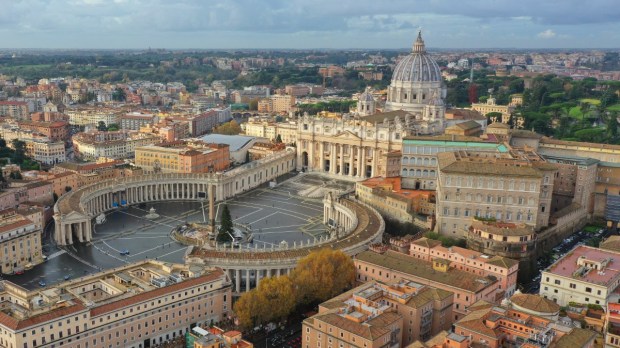Pope Francis has modified the internal structure of the Congregation for the Doctrine of the Faith (CDF) by establishing two distinct sections, a doctrinal and a disciplinary section, each with their own secretary. Now, the Cardinal prefect of the Dicastery will have two chief deputies. The current prefect is 77-year-old Cardinal Luis Francisco Ladaria Ferrer.
The changes are spelled out in a motu proprio titled Fidem servare (“preserving the faith”; cf. 2 Tim. 4:7),
The aim of the reform is to give due importance to the doctrinal section and its fundamental role of the promotion of the faith, without diminishing the disciplinary activity of the congregation. This comes after decades in which a great deal of effort and human resources have been committed to examining abuse cases. With the new structure, each section, with its own secretary, will have greater authority and autonomy.
The CDF currently has about 50 people on staff.
At the service of everyone’s treasure
Fidem servare, “to preserve the faith,” is “the main task, as well as the ultimate criterion to be followed in the life of the Church,” explains Pope Francis in the Letter.
The Doctrinal Section “deals with matters pertaining to the promotion and protection of the doctrine of faith and morals. It also promotes studies aimed at increasing the understanding and transmission of the faith at the service of evangelization, so that its light may be a criterion for understanding the meaning of existence, especially in the face of the questions posed by the progress of the sciences and the development of society.” It also examines documents to be published by other dicasteries, as well as writings and opinions “that appear problematic for the correct faith, encouraging dialogue with their authors and proposing suitable remedies.”
This section is also entrusted with the task of studying questions concerning the personal ordinariates of former Anglicans; and the management of the Matrimonial Office, which concerns the so-called “privilegium fidei” and examines the dissolution of marriages between two non-baptised persons or between a baptised person and a non-baptised person.
Canonical crimes
The Disciplinary Section deals with crimes reserved to the judgement of the Congregation, which are adjudicated by the Supreme Apostolic Tribunal established therein.
The section has the duty of “preparing and implementing the procedures foreseen by the canonical norms so that the Congregation, through its various offices (Prefect, Secretary, Promoter of Justice, Congress, Ordinary Session, College for the examination of appeals in matters of the graviora delicta), can promote a correct administration of justice.”
To this end, the disciplinary section “promotes appropriate formation initiatives,” which are offered to Bishops and legal practitioners, “in order to foster a correct understanding and application of the canonical norms related to the its area of competence.”
According to information from I.MEDIA, the disciplinary section employs about 20 people and deals with more than 1,000 new cases of abuse committed by clerics each year. In 2020, about 60% of the cases involved sexual abuse of minors, according to an internal source, who said that these cases came mainly from regions where the phenomenon of abuse has become more widely addressed – North America, Latin America, and Europe.
Building on the process begun in 2001
By giving autonomy to each of the sections, this new Motu proprio continues a process begun in 2001, under the pontificate of John Paul II, to respond juridically to the crisis of sexual abuse committed by clerics.
With the Motu proprio Sacramentorum sanctitatis tutela, sexual abuse committed by a cleric on a minor under 18 years of age was included in the list of delicta graviora – the most serious crimes – handled by the CDF. This centralization of cases in Rome was intended to compensate for the weaknesses of local jurisdictions.
This broadening of the CDF’s mandate was driven by Cardinal Joseph Ratzinger, then Prefect of the Congregation for the Doctrine of the Faith, who shortly afterwards published a letter entitled De delictis gravioribus setting out the norms of his dicastery on these issues.
Benedict XVI amended these provisions in 2010, notably by extending the statute of limitations to 20 years from the victim’s majority, instead of the previous 10 years. The offence of acquiring, possessing, or disclosing child pornography was also included among the delicta graviora.
Pope Francis’ latest reforms
Then, on December 7, 2021, Pope Francis updated these norms, a few months after the modification of Book VI of the Code of Canon Law, which introduced, among other things, a specific article on crimes against minors.
This development followed two Motu proprio of the Argentinean pope, Vos estis lux mundi – 2019, which includes norms on the responsibility of bishops – and Come una madre amorevole – 2016.
The Archives of the Holy Office
Finally, the Congregation possesses an Archive for “the preservation and consultation of documents,” which also maintains the historic Archives of the former Holy Office and of the Index.
The stipulations of the Apostolic Letter Fidem servare enter into force with its publication in L’Osservatore Romano on 14 February 2022. The text of the motu proprio will subsequently be published in Acta Apostolicae Sedis.


